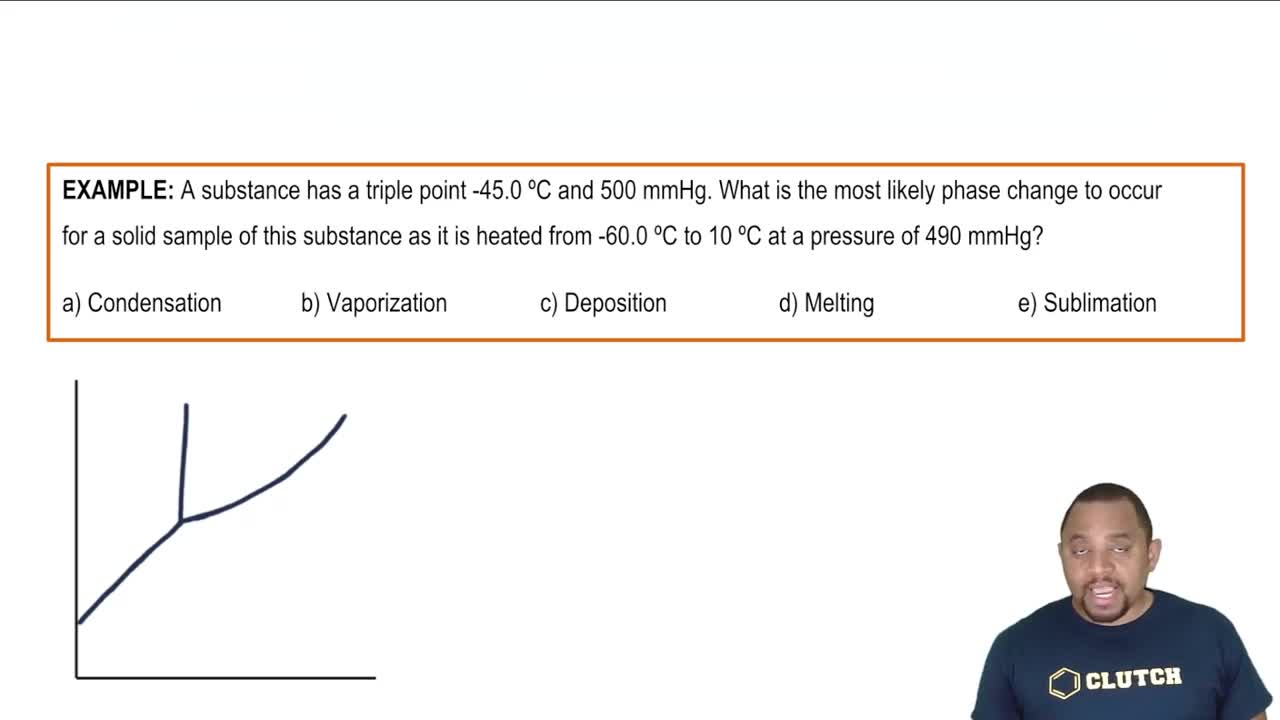Here are the essential concepts you must grasp in order to answer the question correctly.
Sublimation
Sublimation is the process in which a solid transitions directly into a gas without passing through the liquid phase. In the context of naphthalene, this means that solid mothballs can vaporize into gaseous naphthalene at a given temperature, contributing to the equilibrium between solid and gas phases. Understanding sublimation is crucial for calculating how much solid is needed to reach a certain concentration of gas in a defined volume.
Recommended video:
Sublimation Phase Change Example
Equilibrium Constant (Kc)
The equilibrium constant (Kc) quantifies the ratio of the concentrations of products to reactants at equilibrium for a reversible reaction. For the sublimation of naphthalene, Kc indicates the extent to which naphthalene will vaporize at 27 °C. A low Kc value, such as 5.40×10^-6, suggests that at equilibrium, the concentration of gaseous naphthalene will be much lower than that of the solid, which is essential for determining how many mothballs are needed to saturate the room.
Recommended video:
Equilibrium Constant Expressions
Volume and Density Calculations
To determine how many mothballs are needed to saturate the room, one must calculate the volume of the room and the volume occupied by the mothballs. The density of naphthalene allows for the conversion between mass and volume, which is necessary for finding the total mass of naphthalene required to achieve saturation. This involves using the room's dimensions and the physical properties of naphthalene to derive the number of mothballs needed.
Recommended video:




